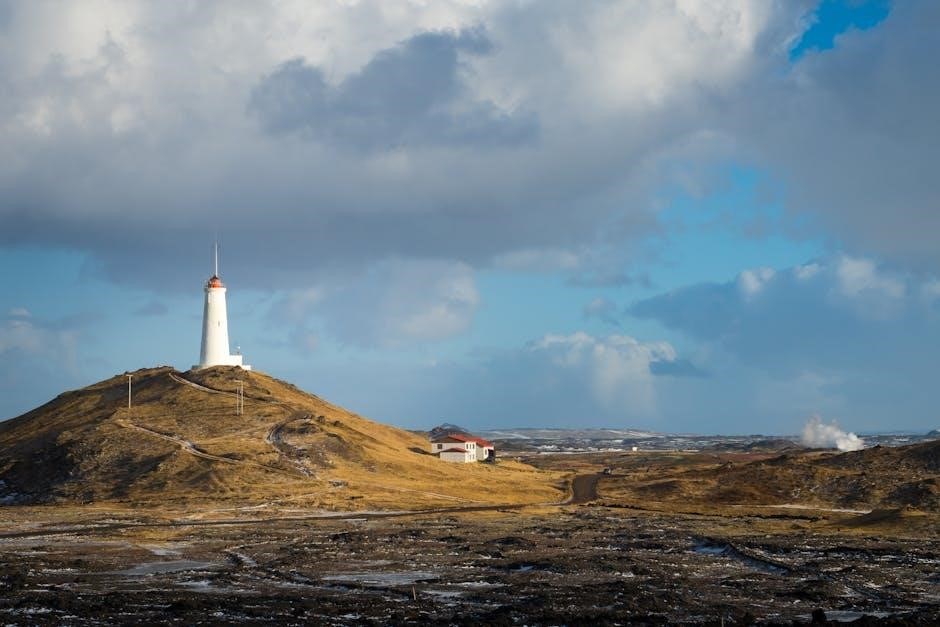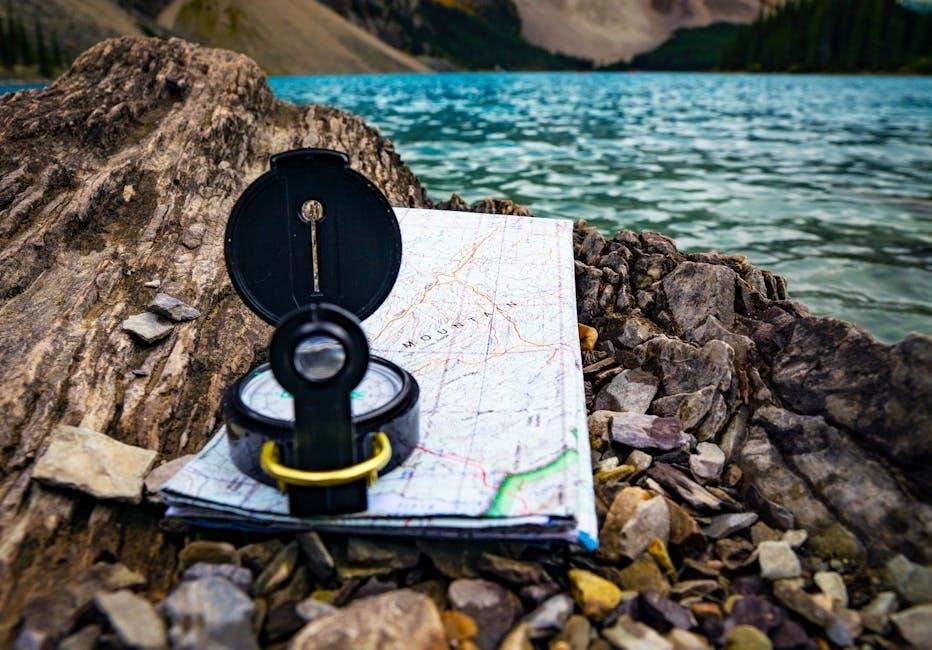A wilderness guide is an expert who leads groups in natural environments, ensuring safety and connection with nature. They possess skills in navigation, survival, and environmental awareness, fostering memorable experiences while preserving ecosystems.
What is a Wilderness Guide?
A wilderness guide is a trained professional who leads individuals or groups in remote natural environments, ensuring safe and enriching experiences. They are skilled in navigation, survival techniques, and environmental knowledge, enabling them to interpret landscapes and wildlife. Guides often specialize in activities like hiking, camping, or canoeing, providing educational insights and fostering connections with nature. Their role combines leadership, risk management, and storytelling, making them essential for exploring the outdoors responsibly while preserving ecosystems for future generations. Their expertise ensures memorable adventures tailored to diverse skill levels and interests.
Importance of a Wilderness Guide
A wilderness guide plays a crucial role in ensuring safety, education, and environmental preservation during outdoor adventures. They provide expertise in navigating remote areas, interpreting ecosystems, and managing risks, which is vital for individuals exploring unfamiliar territories. Guides also foster a deeper connection with nature by sharing knowledge about wildlife, geology, and cultural history. Their presence enhances the overall experience, making adventures more enjoyable and meaningful while promoting responsible tourism and conservation efforts. Their leadership and insights are invaluable for creating lasting memories and fostering a sense of stewardship for the natural world.

Essential Skills for a Wilderness Guide
Navigation, first aid, survival techniques, and environmental knowledge are critical skills for a wilderness guide, ensuring safety and effective leadership in remote and challenging natural environments.
Navigation and Map Reading
Navigation and map reading are essential skills for a wilderness guide, ensuring safe and efficient travel in remote areas. Guides must interpret topographic maps, use compasses, and identify natural landmarks. Understanding map symbols, scales, and grid systems is crucial. Additionally, the ability to read natural signs, such as trails, water sources, and vegetation patterns, enhances navigation accuracy. Proficiency in GPS technology is also valuable, though traditional skills remain indispensable. These skills allow guides to lead groups confidently, even in unfamiliar or challenging terrains, ensuring a seamless wilderness experience. Strong navigation abilities are vital for safety and leadership in the wild.
First Aid and Emergency Response
First aid and emergency response are critical skills for a wilderness guide, ensuring timely and effective care in remote settings. Guides must be trained in wound cleaning, splinting broken bones, and managing allergic reactions. Knowledge of CPR and basic life support is essential. They should also recognize signs of altitude sickness, dehydration, and hypothermia. Carrying a well-stocked first aid kit and knowing how to use items like tourniquets and epinephrine auto-injectors is vital. Quick decision-making and staying calm under pressure are key to preventing minor incidents from escalating into major emergencies.
Shelter Building and Survival Techniques
Shelter building is a fundamental skill for wilderness guides, ensuring protection from harsh weather. Techniques include constructing lean-tos, debris huts, or snow shelters using natural materials. Guides must also teach clients how to start a fire safely, locate clean water sources, and purify water using methods like boiling or sand filtration. Survival skills such as signaling for help and navigating without modern tools are equally important. These techniques ensure safety and self-reliance in remote areas, making guides indispensable in wilderness expeditions.

Safety Measures in the Wilderness
Safety measures are crucial for wilderness guides to protect groups from environmental hazards and emergencies, ensuring preparedness through risk assessment, proper gear, clear communication, and emergency plans.
Weather Awareness and Forecasting
Weather awareness is critical for wilderness guides to ensure safety and preparedness. Guides must interpret cloud formations, wind patterns, and temperature changes to predict storms. Understanding forecast models and using tools like barometers and anemometers helps anticipate conditions. Monitoring weather trends enables timely decisions, such as adjusting routes or setting up camp before severe weather. Recognizing signs of changing weather, like darkening skies or dropping temperatures, is essential for avoiding hazards. Effective weather forecasting ensures a safe and enjoyable wilderness experience for everyone.
- Key elements: cloud patterns, wind shifts, temperature fluctuations.
- Tools: barometers, anemometers, weather apps.
- Signs of bad weather: falling barometric pressure, increasing winds.
Wildlife Encounters and Safety Protocols
Wildlife encounters require guides to prioritize safety and preparedness. Understanding animal behavior and maintaining a safe distance is crucial. Guides should carry bear spray, know first aid for bites, and educate groups on calm behavior during encounters. Protocols include securing food, avoiding attractants, and making noise while hiking to prevent surprising animals. Recognizing signs of aggression, such as raised hackles or growling, allows for proactive measures. Ensuring a safe and respectful interaction with wildlife is essential for both humans and animals, preserving the natural environment and promoting coexistence.
- Key safety measures: bear spray, secure food storage, noise-making devices.
- Protocols: stay calm, maintain distance, avoid direct eye contact.

Legal and Ethical Considerations
Wilderness guides must secure permits, adhere to regulations, and promote environmental stewardship. Ethical practices include minimizing ecological impact and respecting local cultures, ensuring sustainable exploration.
Permits and Regulations
Wilderness guides must obtain necessary permits and comply with local, state, and federal regulations. These ensure responsible land use and protection of sensitive ecosystems; Guides must research and understand specific rules for each area, such as fire restrictions or camping limitations. Failure to comply can result in fines or legal consequences. Staying informed about permits and regulations is crucial for maintaining professional integrity and ensuring safe, lawful expeditions. Proper documentation and adherence to guidelines are essential for a smooth and respectful wilderness experience;
Environmental Impact and Leave No Trace Principles
Wilderness guides must minimize environmental impact by adhering to Leave No Trace principles. This includes disposing of waste properly, avoiding fragile habitats, and not removing natural elements. Guides educate participants on preserving ecosystems, promoting a culture of respect for nature. By following these guidelines, they ensure that wilderness areas remain pristine for future generations, fostering sustainable tourism and environmental stewardship. Responsible practices are essential to maintaining the integrity of natural spaces while providing meaningful outdoor experiences. Guides play a vital role in protecting the environment through their leadership and example.
Mental and Physical Preparation
Mental and physical preparation are crucial for wilderness guides, ensuring they can handle challenges. Building endurance, stamina, and resilience is essential for leading safe and successful expeditions.
Building Endurance and Stamina
Building endurance and stamina is essential for wilderness guides to handle the physical demands of leading expeditions. Regular cardiovascular exercises, strength training, and flexibility routines help improve physical conditioning. Mental stamina is equally important, as guides must stay focused and composed under pressure. Progressive overload and consistency in training ensure gradual improvement. Incorporating activities like hiking, swimming, and cycling can enhance overall endurance. A well-rounded fitness regimen prepares guides to navigate challenging terrains and maintain energy levels throughout long journeys, ensuring both safety and effectiveness in wilderness environments.
Mental Toughness and Decision-Making
Mental toughness is critical for wilderness guides, as they face unpredictable challenges in remote environments. Developing resilience through mindfulness, stress management, and problem-solving exercises enhances their ability to remain calm under pressure. Effective decision-making requires balancing intuition with logical analysis, ensuring the safety and well-being of the group. Training in crisis management and scenario-based simulations helps build confidence and sharpens judgment. A mentally tough guide can adapt to unforeseen situations, fostering trust and reliability among participants, which is vital for successful wilderness expeditions and maintaining a positive group dynamic.

Engaging with the Community
Engaging with the community involves building connections, fostering inclusivity, and respecting cultural traditions. Guides collaborate with local experts to enhance experiences, promoting conservation and education for all participants.
Leading Groups and Communication
Effective communication is crucial for a wilderness guide when leading groups. Clear instructions and active listening ensure safety and engagement. Guides must adapt their leadership style to group dynamics, fostering teamwork and trust. Strong verbal and non-verbal communication helps manage expectations and address concerns. Empathy and patience are essential, especially in challenging situations. A guide’s ability to inspire confidence and unity within the group directly impacts the success of the wilderness experience. Building rapport and encouraging open dialogue create a positive and inclusive environment for all participants.
Cultural Awareness and Respect
Cultural awareness is vital for wilderness guides to respectfully interact with diverse groups and local communities. Understanding local traditions, histories, and protocols helps prevent misunderstandings. Guides should educate themselves about the cultural significance of the regions they operate in, fostering appreciation and respect. Engaging with indigenous communities and involving them in guiding activities can promote mutual understanding and support. By embracing cultural diversity, guides create inclusive environments that enrich the wilderness experience for everyone involved. Respectful communication and sensitivity to cultural differences are essential for building positive relationships and ensuring a harmonious adventure.
Becoming a wilderness guide requires passion, skill, and dedication; It’s a journey that inspires growth, connection with nature, and the joy of sharing these experiences with others.
Final Thoughts on Becoming a Wilderness Guide
Becoming a wilderness guide is a rewarding journey that combines passion for nature, leadership, and education. It requires dedication to continuous learning, physical fitness, and emotional resilience. A good guide not only ensures safety but also fosters a deep connection between people and the natural world. By embracing challenges and sharing knowledge, wilderness guides inspire others to explore and protect the environment. This role is more than a career—it’s a way to make a lasting impact on individuals and the planet.
